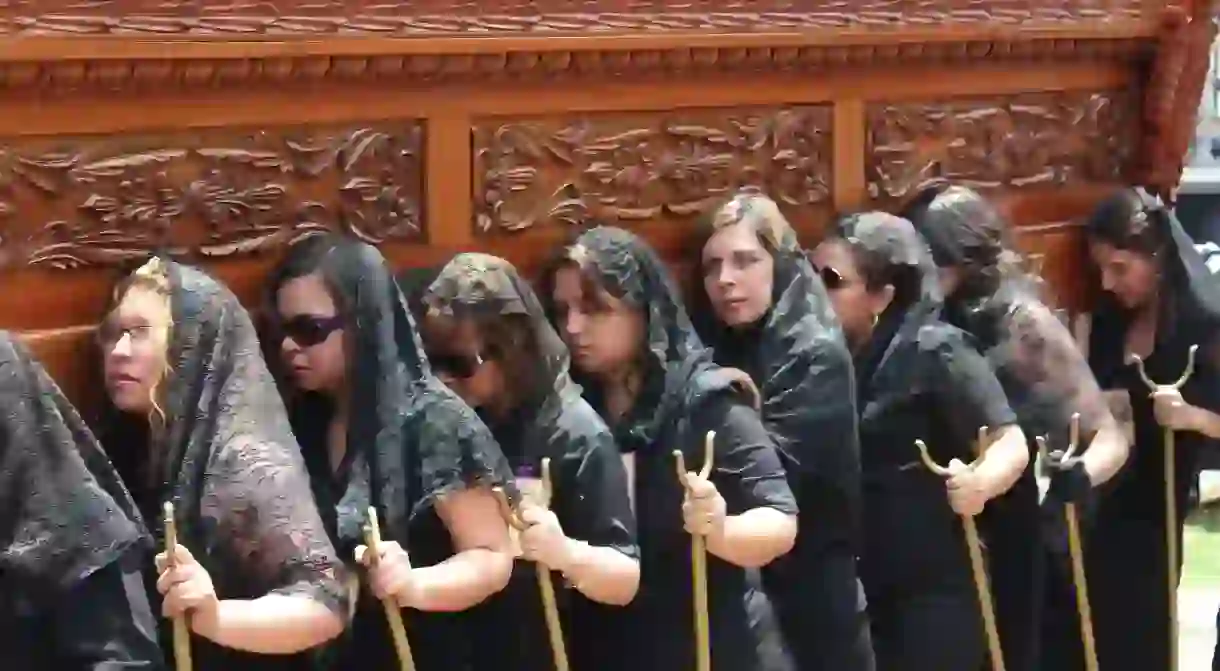The Untold Story of Guatemala's Cucuruchos

If you are lucky enough to visit Guatemala during the Holy Week processions, you might be surprised by the sight of people in creepy looking get-ups.

A test of faith
Whether they are marching solemnly in formation or carrying one of the huge floats, these penitents are an important part of the celebrations. Known as “cucuruchos” to locals, they are Catholic worshippers who want to prove their faith by taking part in the processions.
They take their name from the conical hats that they wear, “cucuruchos” or “capirotes”. These days you don’t have to wear a hat to be a “cucurucho,” you just have to take part in the processions.

A gift from the Spanish
First of all, the outfits were worn by pilgrims on the road to Rome and Santiago de Compostela in the 12th century. Then they were introduced to Guatemala around 1550 by the Spanish conquistadors, and have changed very little today. During Lent, the outfit is completely purple. On Maundy Thursday, a white cape is worn, and on Good Friday the costumes are black.
The “cucuruchos” take turns carrying the heavy floats, some of which are as long as a bus, through the streets of Antigua. Their labour is a sign of penitence and devotion to the Catholic faith.

Competition is fierce
In an interview with Guatemalan magazine Comvite, a local penitent reveals that 70 people carry the average float. It is so heavy that there have to be 50 different teams of “cucuruchos” during the procession.
It might seem unlikely, but the penitents pay for the privilege. It can cost $3.50 to $7 (€2.85 – €5.70) for a turn carrying the float, with the turns organized by city block. “Cucuruchos” pay more for a turn that is on a good block, or a special turn that involves carrying the float out of a church.
Take a trip to Antigua Guatemala during Lent or Holy Week to see the “cucuruchos” in action for yourself. Even if you’re not religious, it’s a hugely impressive cultural event.













